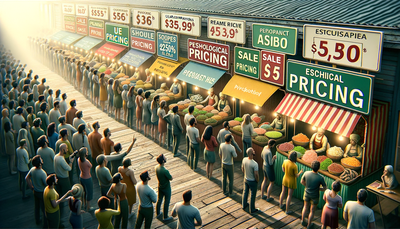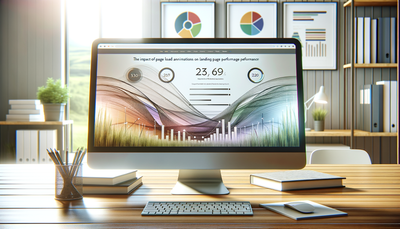Designing for Sustainability: Creating Eco-Friendly Websites
In an era where digital sustainability is becoming increasingly important, web designers and developers are faced with the challenge of creating eco-friendly websites. This article explores the concept of designing for sustainability, focusing on strategies to minimize digital carbon footprints. We'll delve into various techniques for optimizing images, reducing server loads, and crafting energy-efficient layouts. By implementing these practices, web professionals can contribute to a greener digital landscape while still delivering high-quality, visually appealing websites. Join us as we uncover the key principles of sustainable web design and learn how to create environmentally conscious online experiences.Table of Contents:

Understanding Digital Carbon Footprints
Before diving into sustainable web design practices, it's crucial to understand the concept of digital carbon footprints. Every website consumes energy through server operations, data transfer, and user device interactions. The larger and more complex a website is, the more energy it requires to function.This energy consumption contributes to carbon emissions, impacting the environment. By creating eco-friendly websites, designers can significantly reduce these digital carbon footprints. It's not just about being environmentally responsible; it's also about improving user experience through faster loading times and more efficient operations. Sustainable web design is a win-win situation for both the planet and website visitors.
Do you need a website? Want to build a website but don't know where to start? Our website builder is the perfect solution. Easy to use, and with the ability to customize to fit your business needs, you can have a professional website in no time.
Optimizing Images for Sustainability
Images often constitute a significant portion of a website's data load. Optimizing them is crucial for reducing server loads and minimizing energy consumption. Start by choosing the right file format for each image. Use JPEGs for photographs and complex images with many colors, and PNGs for images with transparency or fewer colors.Compress images without sacrificing quality using tools specifically designed for web optimization. Consider implementing lazy loading, which delays the loading of images until they're needed, reducing initial page load times. Additionally, use responsive images that adapt to different screen sizes, ensuring that users only download the image size they need. By implementing these strategies, you can significantly reduce the amount of data transferred, leading to more sustainable websites.
Reducing Server Loads
Server operations contribute significantly to a website's energy consumption. To create a more sustainable website, focus on reducing server loads. Implement caching mechanisms to store frequently accessed data, reducing the need for repeated server requests. Minify your CSS, JavaScript, and HTML files by removing unnecessary characters and whitespace, resulting in smaller file sizes.Consider using a Content Delivery Network (CDN) to distribute your website's static content across multiple servers globally. This not only reduces the load on a single server but also improves loading times for users across different geographical locations. Additionally, regularly audit your website for unused or outdated content, plugins, and features. Removing these unnecessary elements can significantly lighten the server load and improve overall website performance.
Building a website with SITE123 is easy
Creating Energy-Efficient Layouts
The design and structure of your website play a crucial role in its energy efficiency. Opt for a minimalist design approach that focuses on essential elements and removes unnecessary clutter. This not only creates a cleaner, more user-friendly interface but also reduces the amount of data that needs to be loaded.Implement a mobile-first design strategy, which naturally encourages a more streamlined and efficient layout. Use CSS Grid and Flexbox for responsive layouts, as they require less code and are more efficient than older layout techniques. Consider using system fonts or variable fonts to reduce the need for loading external font files. When using custom fonts, limit the number of font weights and styles to minimize file sizes. By creating energy-efficient layouts, you can significantly reduce the resources required to render and interact with your website.
Optimizing Code and Functionality
Efficient code is at the heart of sustainable web design. Start by writing clean, well-structured code that's easy to maintain and update. Use CSS preprocessors like Sass or Less to write more efficient and organized stylesheets. Optimize your JavaScript by avoiding heavy libraries when simpler solutions will suffice.Implement asynchronous loading for non-critical scripts to prevent them from blocking page rendering. Consider using static site generators or JAMstack architecture for content-heavy websites, as they can significantly reduce server load and improve performance. Regularly audit your code and remove any redundant or unused functions. By optimizing your website's code and functionality, you not only improve its sustainability but also enhance its overall performance and user experience.
Choosing Sustainable Hosting Solutions
The choice of hosting provider can have a significant impact on your website's environmental footprint. Look for hosting companies that prioritize sustainability and use renewable energy sources to power their data centers. Some providers offer green hosting plans specifically designed to minimize environmental impact.Consider using cloud hosting solutions, which can be more energy-efficient due to their ability to scale resources as needed. If possible, choose a data center location that's closer to your primary audience to reduce data travel distances. Additionally, explore options for carbon offsetting programs offered by some hosting providers. By making informed choices about your hosting solution, you can further reduce your website's overall carbon footprint and contribute to a more sustainable digital ecosystem.





